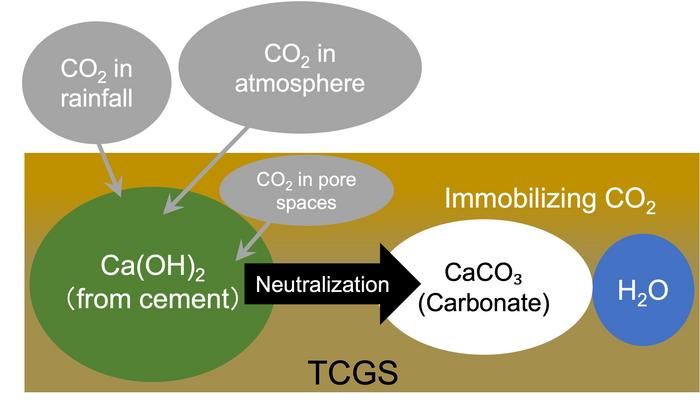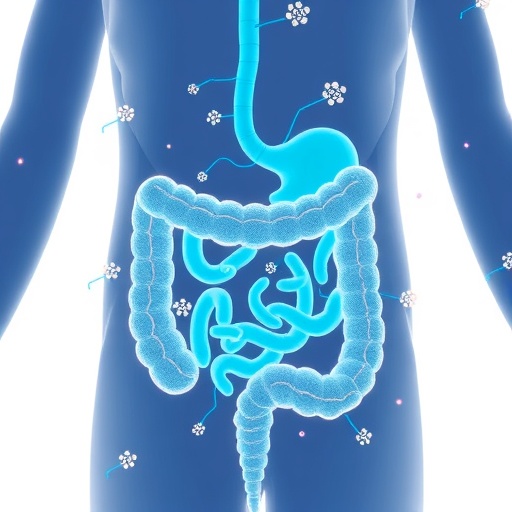The construction industry is recognized for its high resource consumption and large waste generation. Among the waste products generated are construction-generated sludge (CGS) and construction-generated surplus soil (CGSS). These can be used for various applications such as backfilling, the creation of environmentally friendly building materials like bricks, and soil stabilization. However, these materials are highly alkaline, and this poses a risk of soil and water contamination, which adversely impacts plant and animal life. Furthermore, the large volume of CGS and CGSS generated, along with its unlawful dumping, pose further challenges. Therefore, newer solutions are required for their management and recycling.

Credit: Shinya Inazumi from SIT, Japan
The construction industry is recognized for its high resource consumption and large waste generation. Among the waste products generated are construction-generated sludge (CGS) and construction-generated surplus soil (CGSS). These can be used for various applications such as backfilling, the creation of environmentally friendly building materials like bricks, and soil stabilization. However, these materials are highly alkaline, and this poses a risk of soil and water contamination, which adversely impacts plant and animal life. Furthermore, the large volume of CGS and CGSS generated, along with its unlawful dumping, pose further challenges. Therefore, newer solutions are required for their management and recycling.
In a recent study led by Professor Shinya Inazumi from the College of Engineering at Shibaura Institute of Technology in Japan, a team of researchers has now addressed this issue by presenting a new, cost-effective strategy for the management of CGS. They have proposed the use of “aeration curing,” a technique that converts carbon dioxide to carbonate, as a solution. Their work was made available online on 23 November 2023 and published in Case Studies in Construction Materials on 01 July 2024.
Prof. Inazumi explains: “The initiation of the study on aeration curing was driven by the growing need to align construction practices with the sustainable development goals (SDGs). There is an urgent need for innovative solutions to effectively manage waste and reduce carbon footprints of the construction industry.”
The process of aeration curing involves carbon dioxide reacting with alkaline calcium hydroxide in the CGS to form less alkaline calcium carbonate. Notably, this neutralization method reduces the need for additional neutralizers, like sulfuric acid, typically required in more conventional treatment methods. Furthermore, traditional management practices are fighting rising costs of transportation, processing, and disposal.
For this study, aeration curing of CGS samples was conducted under various conditions. This involved manipulating factors, such as the speed of agitation, performing aeration curing within a drying oven, altering the surface area of the aerated region, and introducing a neutralizer to the samples. The findings revealed that the reduction in pH (a measure of alkalinity) was more pronounced at higher agitation speeds, during curing in a drying oven, and with a larger aerated surface area. Additionally, the aeration curing process required less neutralizer. These results highlight the potential of aeration curing as a sustainable construction practice for CGS management and carbon sequestration.
There are far-reaching implications of these findings, spanning various domains. Aside from waste management in the construction industry, the ability of the proposed method to neutralize soil can prove useful in land reclamation and remediation by preparing acidic or contaminated land for construction or agricultural use. Subsequently, this will help increase soil yields by improving overall soil health. Furthermore, this approach can be incorporated into academic curriculum and research projects that focus on environmental science and engineering, helping institutes explore sustainable waste management practices.
In the long term and from a big picture perspective, Prof. Inazumi speculates: “By aligning with the SDGs, aeration curing provides a practical tool for policymakers to promote sustainable practices in waste management and carbon sequestration. This, in turn, can influence regulations and guidelines related to construction and environmental protection. However, further refinement of the theoretical model is needed to accurately reflect real-world neutralization reactions.”
In summary, aeration curing, which can serve the dual purpose of soil neutralization and carbon sequestration, holds significant promise for influencing various disciplines and marks a crucial advancement in sustainable and environmentally responsible construction practices.
***
Reference
Title of original paper: Aeration curing for recycling construction-generated sludge and its effect of immobilizing carbon dioxide
Journal: Case Studies in Construction Materials
DOI: https://doi.org/10.1016/j.cscm.2023.e02704
About Shibaura Institute of Technology (SIT), Japan
Shibaura Institute of Technology (SIT) is a private university with campuses in Tokyo and Saitama. Since the establishment of its predecessor, Tokyo Higher School of Industry and Commerce, in 1927, it has maintained “learning through practice” as its philosophy in the education of engineers. SIT was the only private science and engineering university selected for the Top Global University Project sponsored by the Ministry of Education, Culture, Sports, Science and Technology and will receive support from the ministry for 10 years starting from the 2014 academic year. Its motto, “Nurturing engineers who learn from society and contribute to society,” reflects its mission of fostering scientists and engineers who can contribute to the sustainable growth of the world by exposing their over 8,000 students to culturally diverse environments, where they learn to cope, collaborate, and relate with fellow students from around the world.
Website: https://www.shibaura-it.ac.jp/en/
About Professor Shinya Inazumi from SIT, Japan
Professor Shinya Inazumi is a faculty member at The College of Engineering at Shibaura Institute of Technology, Tokyo, Japan. He earned his Ph.D. from Kyoto University and has an extensive academic record with over 105 publications and 350 citations. He specializes in civil, geotechnical, and environmental engineering and has earned several prestigious awards, including the “ICE Publishing Awards 2020 (Environmental Geotechnics Prize)” from the Institution of Civil Engineers, the “International Research Award” from the International Society for Scientific Network Awards, and the “MEXT Young Scientists’ Prize” from the Ministry of Education, Culture, Sports, Science and Technology in 2015.
Journal
Case Studies in Construction Materials
DOI
10.1016/j.cscm.2023.e02704
Method of Research
Experimental study
Subject of Research
Not applicable
Article Title
Aeration curing for recycling construction-generated sludge and its effect of immobilizing carbon dioxide
Article Publication Date
23-Nov-2023
COI Statement
The authors declare that they have no known competing financial interests or personal relationships that could have appeared to influence the work reported in this paper




